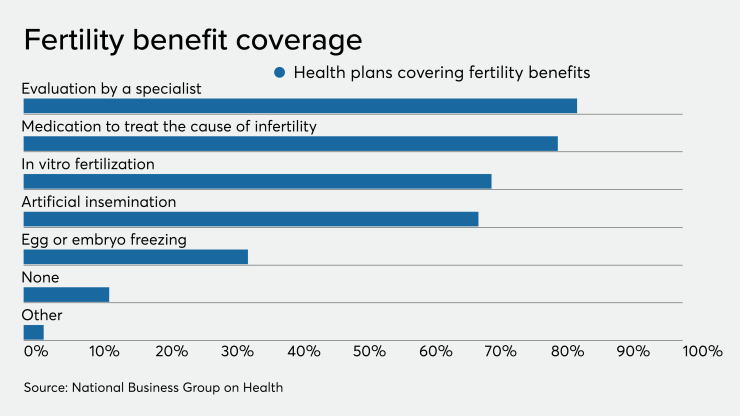With open enrollment coming up from Nov. 1 through Dec. 31, employers are currently reviewing their employee benefit offerings. Fertility and family-building benefits continue to be among the most coveted benefits and employers recognize the role it plays in attracting and retaining top talent.
Now is the right time for employers to consider a managed fertility benefit, because it helps to control the long-term healthcare costs associated with their employee family-building benefit offering. A managed fertility benefit can help offset the economic losses many companies have sustained as a result of COVID-19.
A managed fertility benefit, led by a third party organization with comprehensive clinical advocacy, helps to identify the best treatment plan in order to provide the most successful outcome for the employee, while keeping benefit costs in check for employers. This clinical oversight leads to higher employee satisfaction and efficient use of benefit dollars, which reduces cycle costs by 15% to 30% as compared to an unmanaged cycle.
A potential challenge for employers with an unmanaged program are costs from unnecessary fertility and genetic testing, additional fees, as well as higher costs related to NICU claims and loss of productivity. An unmanaged benefit essentially leaves the employee to navigate their own path through a complicated fertility environment, leading to less informed decisions about the most effective treatment plan, and less desirable outcomes, along with higher levels of stress and costs.
Providing emotional support
As a result of the COVID-19 outbreak, IVF treatments nationwide were canceled or delayed, placing parents-to-be and their clinical teams in unprecedented waters. The stress related to family planning for these employees never paused, reaffirming that infertility treatments are an essential service for employees. As the pandemic continues and the threat of a new wave is likely to become a reality, fertility treatment cancelations continue to loom.
The result: employers increasingly recognize the need and opportunity to offer emotional support to employees. Many employers have taken advantage of the on-staff behavioral health professionals that a managed fertility benefit offers and usage is expected to double in 2021.
While there was initial closure on fertility treatment during the pandemic, there is now pent up demand for family-building as people are prioritizing the importance of family, now more than ever. As we are all getting acclimated to the new normal, we have learned that COVID has not stopped those who want a family from moving forward with treatments. While there are some adjustments to be considered in pursuing fertility treatments in this new reality, with the correct clinical oversight that comes from a managed fertility benefit, employers can continue to provide this very important benefit to employees.
Family building for socially infertile populations
Social inequality has become a rallying cry in 2020. Companies are increasingly waiving the definition of infertility and considering the use of a single inclusive benefit limit available for all employees to support their family-building journey.
Offering a single inclusive benefit limit means that an employee is given a specific dollar amount to cover anything from fertility treatments, medications, egg and sperm freezing, as well as adoption and surrogacy, and is now perceived as a progressive and fair benefit offering for all employees to build their families. This evolution in benefit design allows heterosexual couples, same-sex couples and individuals access to the same level of support for building their family regardless of what type of services or treatment they may need. While the amount of the benefit limit offered may decrease for some cost-conscious companies in 2021, emphasis will be put on optimizing the most value out of the benefit cycle to ensure the most successful outcomes along with the most cost effective results, which only a managed fertility benefit with clinical advocacy can accomplish.
Looking ahead
Optimizing a family building program will include a complete benchmarking of benefit and costs. When resources are limited, it’s common for hopeful couples to make choices that lead to the birth of twins, triplets or more. The cost of NICU stays for these multiple births can quickly soar and are paid by the employer sponsored health plan. Offering clinical advocacy to these couples and benefit support in dollars helps them to make smart choices, improving outcomes and nearly eliminating high order multiple births and excessive NICU expenditures. As we emerge from the COVID-induced slowdown and we return to a more competitive environment, the demand for family-building benefits will once again be on the rise. Despite the timing of each company’s recovery, a thoughtful review of any current or desired family building program can be completed within weeks and is . a wonderful offering that pays dividends in employee appreciation, reduced costs, increased productivity and healthy growing families.






